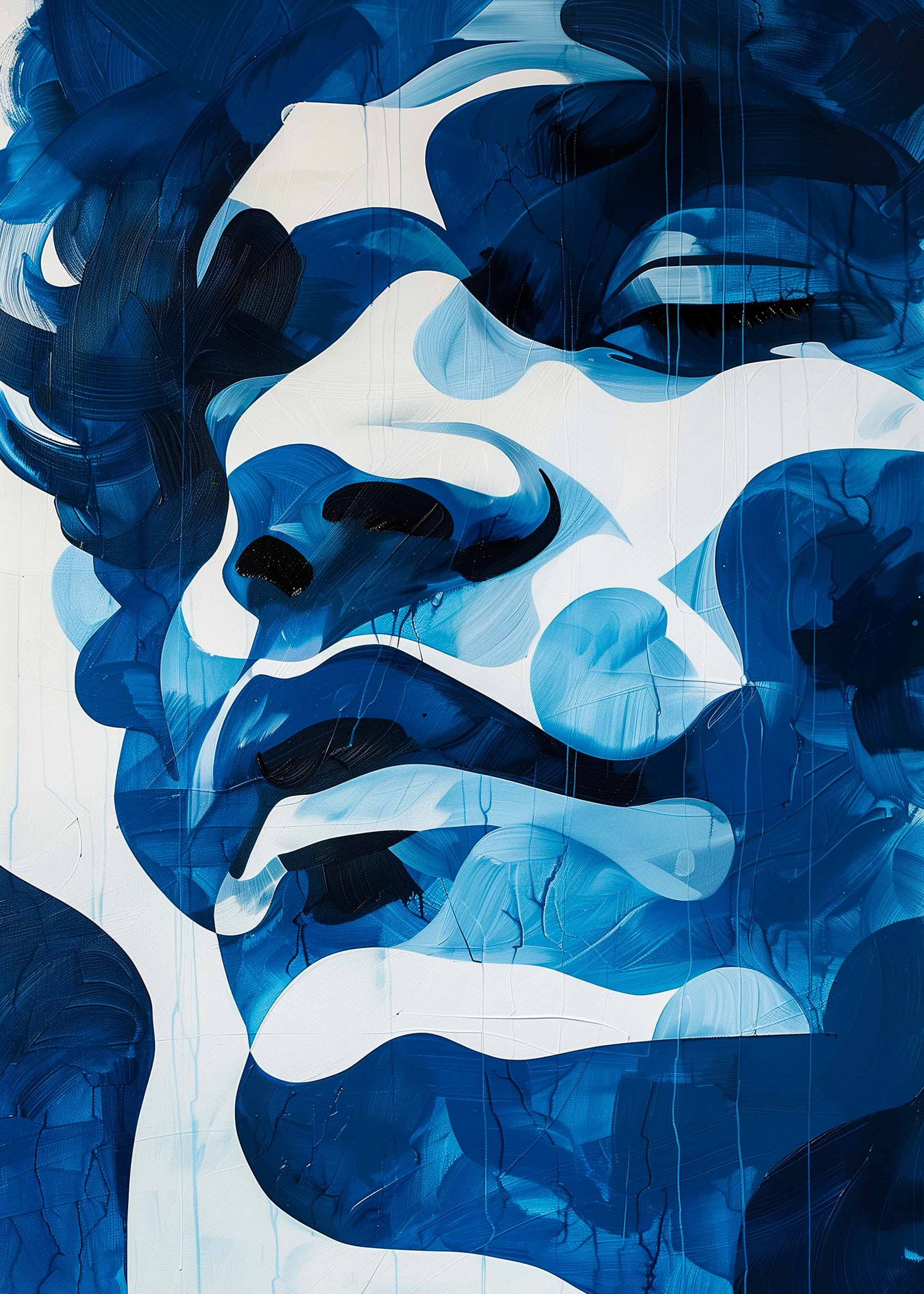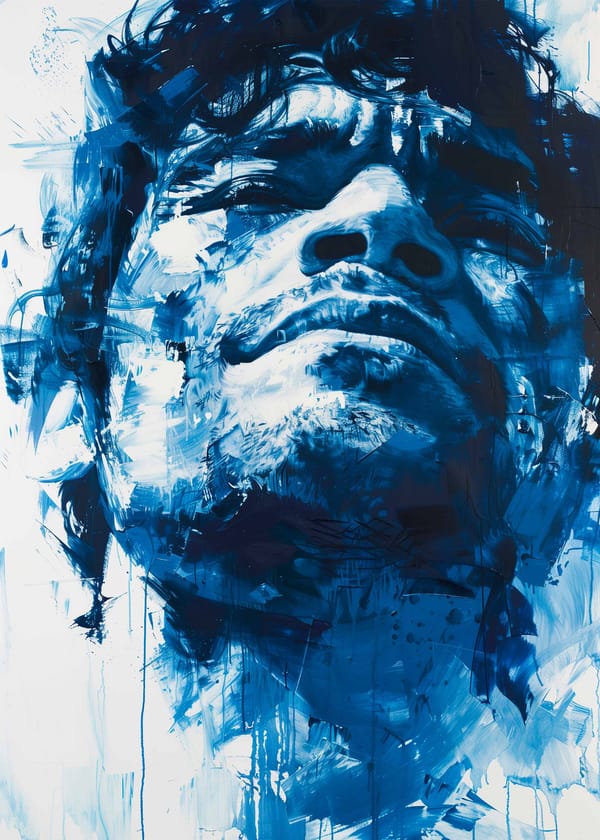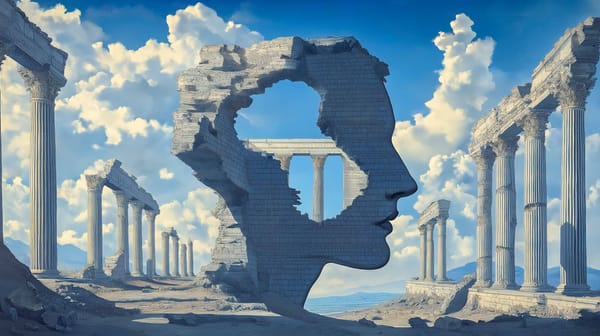The Siren and the Saint
Naples is a city defined by myth and miracle, where the ancient and the contemporary coexist in vibrant disorder. It is a city born from legends, where the sea once sang lullabies that lured sailors to their fate. Among these stories, none is more deeply ingrained in the Neapolitan soul than that of Parthenope, the siren. Among the modern miracles, none is more significant than the arrival of Diego Armando Maradona—a mortal who transcended the game of soccer and became a divine figure in the eyes of the people. What happens, then, when Parthenope meets Maradona? This is the tale of how myth met reality and how one man rekindled the spirit of an entire city.
Parthenope, the siren, is said to have washed ashore where Naples stands today. A creature of beauty, her sorrowful song represented unfulfilled longing—a longing for love, purpose, and a place to belong. Naples, the city that sprang up around her myth, has forever been marked by an equally profound yearning. It is a city that struggles and thrives, a city that is rich in culture and poor in wealth, a place of magnificent contrasts.
Then came Maradona. He did not arrive with a song but with his feet—a small man with a gift that seemed otherworldly. To the people of Naples, Maradona was more than just a player. He was the answer to their long-standing prayers, the embodiment of hope in a city that the powerful northern cities of Italy had long marginalized. He gave Naples a loud voice across Italy, Europe, and the world.
Parthenope: The Spirit of Naples
The legend of Parthenope is central to Naples's identity. According to mythology, Parthenope was one of the sirens who tried to enchant Odysseus with her song. When she failed, she threw herself into the sea, her body washing ashore on what would become the Bay of Naples. Her death symbolized the birth of something new—a city shaped by longing, tragedy, and unfulfilled dreams. Naples grew around her legend, a city blessed and cursed by its beauty and complexity.
Parthenope's presence is felt everywhere in Naples. She is in the waves that crash against the rocky shores, in the air that carries the scent of the sea mixed with the smoke of street vendors' frying pans, in the laughter of children playing in the narrow streets, and in the melancholy of the old songs sung by fishermen. Naples has always been a place that embraced its dualities—life and death, joy and sorrow, chaos and beauty—just as Parthenope embodies both enchantment and tragedy.
For centuries, Naples struggled beneath the weight of history. It was a city ruled by foreign powers, and its people were often left to fend for themselves, forgotten by the rest of Italy. Yet, despite the hardships, the Neapolitans retained their pride, culture, and unyielding spirit. They longed for something, someone, to lift them—to turn their dreams into something tangible.
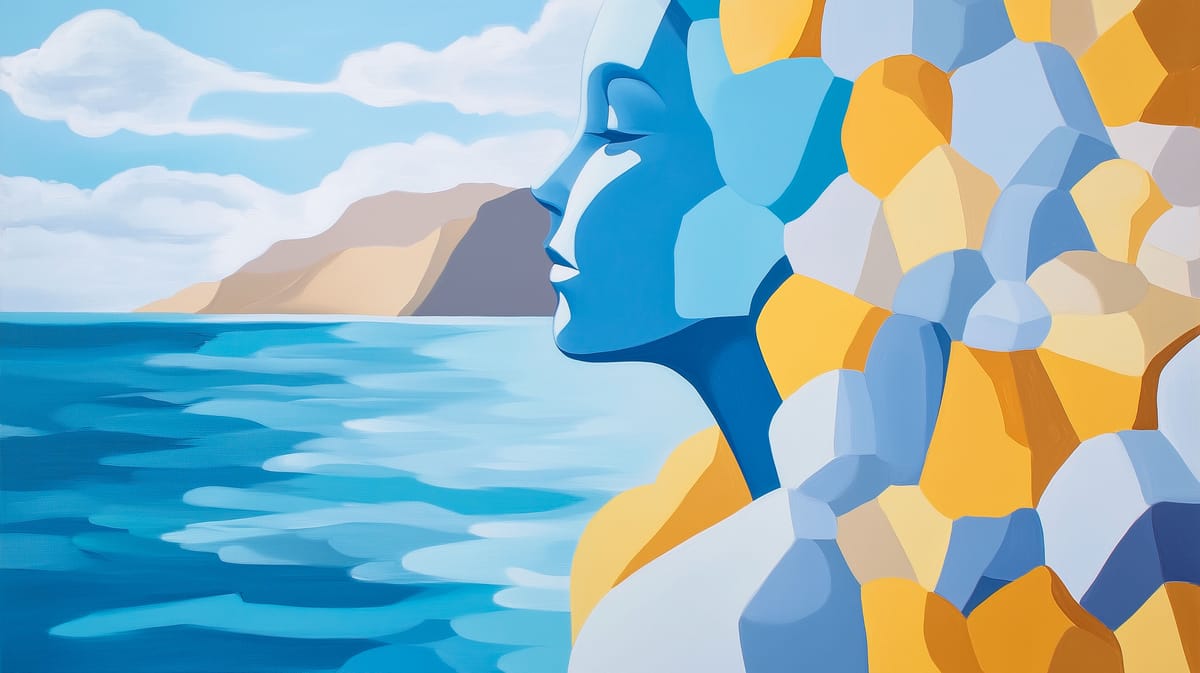
The Arrival of Maradona
In the summer of 1984, a miracle occurred. Diego Armando Maradona, already a global superstar, came to play for SSC Napoli. It was a move that shocked the footballing world. Why would the greatest player in the world come to Naples, a city whose club had never won a Serie A title and was dwarfed by the likes of Juventus, AC Milan, and Inter? Maradona arrived as an outsider but became Naples' favorite son within moments.
From the moment he stepped onto the pitch at Stadio San Paolo, Maradona seemed to understand Naples in a way that transcended language and culture. He embraced its chaos, its beauty, its people. To Maradona, Naples was more than just a club; it was a cause, a mission. He knew what it meant to be looked down upon, to be underestimated. He knew what it meant to carry the hopes of the oppressed.
Maradona's time in Naples was about more than just soccer. It was about giving the people of Naples something they had never had before—a reason to hold their heads high. He led SSC Napoli to their first-ever Serie A title in 1987 and then again in 1990. For a city that had been waiting for centuries for a hero, Maradona's triumphs were nothing short of divine. He was not just a footballer but a liberator and savior.
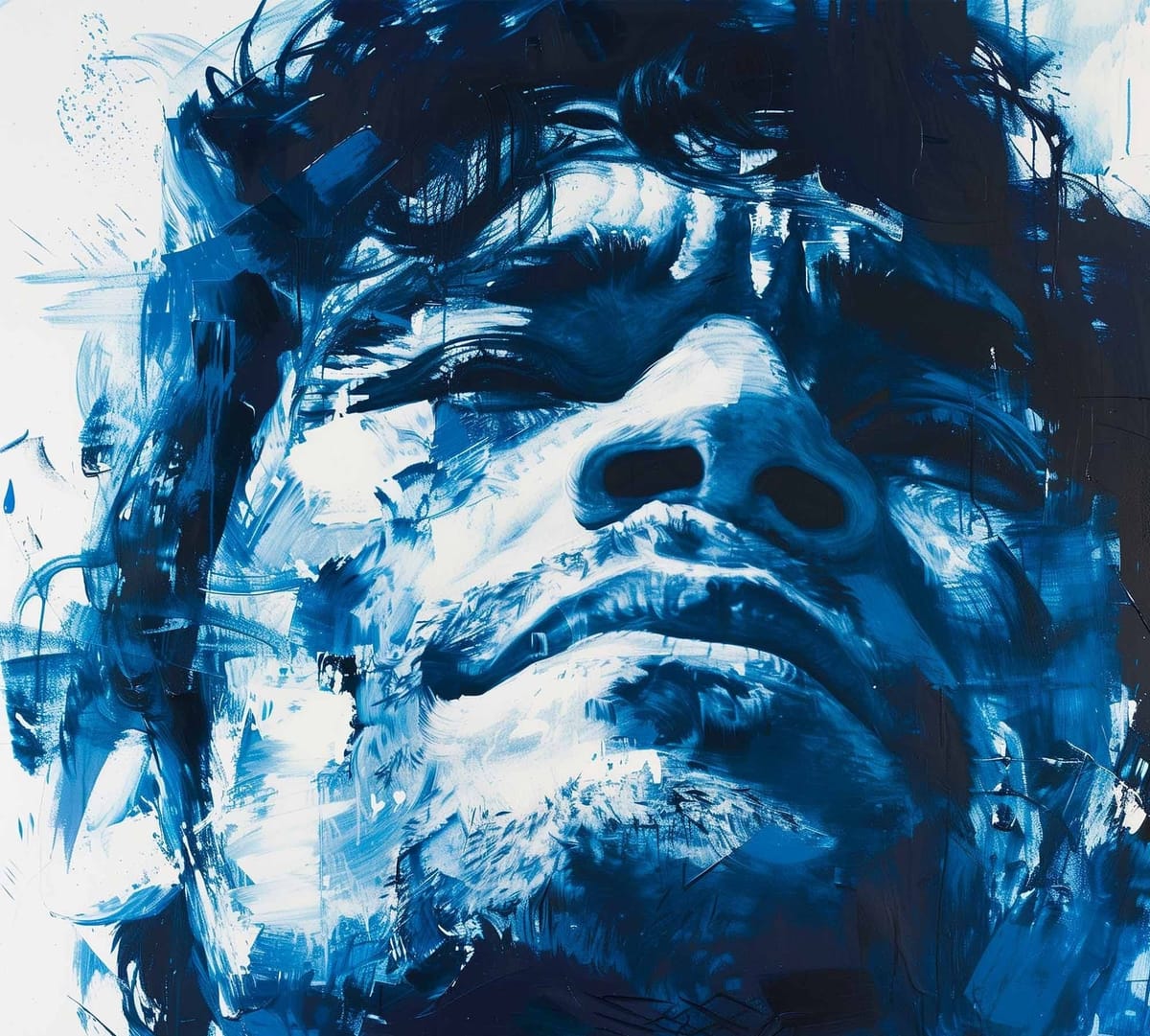
Parthenope and Maradona: A Meeting of Myth and Flesh
If Parthenope represents Naples's soul—its longing, beauty, sorrow—then Maradona represents its heart. He was flesh and blood, flawed and human yet capable of the extraordinary. Maradona was the living embodiment of the Neapolitan spirit, a spirit that refused to be tamed and fought back against adversity with audacity and flair.
When Maradona led Napoli to victory, it was as if Parthenope had sung again, but this time, her song was not one of despair. It was a song of triumph, joy, and a time when people finally saw their dreams fulfilled. The city came alive in a way it never had before. Murals of Maradona appeared on buildings; his name was sung in the streets. He was a man, a mortal, yet he was elevated to the status of a god. The siren had finally found her hero.
Maradona's arrival transformed Naples. Suddenly, the city was no longer just the poor, forgotten sibling of Rome and Milan. Naples was the champion of Italy, and Maradona was its king. The people of Naples, long accustomed to being overlooked and belittled, now had a figure who demanded the world's attention. In Maradona, they saw themselves—their struggles, dreams, and defiance. He was imperfect, and they loved him all the more for it.
A City Transformed
The impact of Maradona's time in Naples went far beyond the football field. He gave the people hope, a sense of pride that transcended sport. He brought attention to a city that had often been dismissed by the rest of Italy as backward or insignificant. Maradona did not just play football; he represented Naples in its entirety—its struggles, its hopes, its contradictions.
To understand Maradona's significance to Naples, one must understand the deep divide in Italy. With its wealth and industry, the North has often looked down on the South, and Naples has borne the brunt of this prejudice. For decades, Neapolitans were ridiculed and marginalized. Maradona's success challenged this narrative. When he led Napoli to victory, it was not just a sporting achievement but a declaration that Naples was just as worthy and capable as any other city.
Maradona embraced Naples, and Naples embraced him back, flaws and all. He was a genius, but he was also human—he made mistakes, struggled with addiction, and lived his life in the public eye, often to his detriment. But to the people of Naples, his imperfections made him even more relatable. He was not a distant, untouchable figure; he was one of them.

The Legacy of Diego and Parthenope
When Maradona left Naples in 1991, the city was forever changed. His departure was bittersweet—he had given them the greatest moments in their footballing history, but his demons had taken a toll. Yet even after he was gone, his presence remained. Murals of Maradona are still visible across the city, his image lovingly preserved on walls and in the people's hearts. To this day, the name Diego is whispered with reverence in Naples, a reminder of when the impossible became possible.
Parthenope's spirit still haunts the city, but her song has changed. No longer is it a lament for what could never be. Thanks to Maradona, it became a song of hope, of triumph, of a people who dared to dream. The legend of Parthenope and the reality of Maradona intersected in a way that transformed Naples forever. The siren and the saint met, and the city was reborn.
Even years after his death, Maradona is still present in Naples. The Stadio San Paolo has been renamed Stadio Diego Armando Maradona, a testament to the eternal bond between the man and the city. He is a part of Naples' mythology now, as much a part of its story as Parthenope herself. He was not perfect, but he was theirs, and that made all the difference.
Glossary of Key Terms
- Parthenope: A siren from Greek mythology whose body, according to legend, washed ashore and became the foundation of Naples. She symbolizes the city's longing and sorrow.
- Maradona: Diego Armando Maradona, an Argentinian football player, considered by many to be one of the greatest. He played for SSC Napoli from 1984-1991, becoming a legendary figure in Naples.
- SSC Napoli: A football club based in Naples. It was the team Maradona played for and led to unprecedented success, including two Serie A titles.
- Serie A: The top professional football league in Italy. SSC Napoli is one of the teams competing in this league.
- Stadio San Paolo (now Stadio Diego Armando Maradona): The football stadium in Naples, where Maradona played and that was renamed in his honor after his death.
- Magna Graecia: The area of Southern Italy that was once colonised by Ancient Greek settlers. Naples is one such city in this area.
- Neapolitans: The people who live in Naples, with their own distinct culture, history, and identity.
- The Siren: Refers to the mythological figure Parthenope. She symbolises a mythical link to the history and character of the city.
- The Saint/Savior: The metaphorical title given to Maradona. It refers to his impact as not just a footballer, but also a symbol of hope for the people of Naples.
- The North/Southern Divide (Italy): This phrase references the historical divide between Northern and Southern Italy. It is a political, economic, and cultural division often marked by prejudice against the south.
The Eternal Song
When Parthenope met Diego Armando Maradona, she found a voice for her longing, a champion who embodied the spirit of the city she gave birth to. Maradona was the mortal manifestation of the Neapolitan dream—a man who defied the odds brought joy to the people and showed that even the most marginalized could rise to greatness. He was the answer to centuries of yearning, a fleeting but unforgettable miracle that changed everything.
The legend of Parthenope is no longer a story of sorrow but one of resilience and triumph. The people of Naples found a reason to believe in themselves, thanks to Maradona. They found a hero who represented them in their beauty and flaws. The siren's song continues to echo through the streets of Naples, but it is no longer a song of despair. It is a celebration, a reminder that miracles can happen, even in the most unexpected places.
Maradona may be gone, but his spirit lives in Naples, just like Parthenope's. Together, they form the heart and soul of a city that refuses to be silenced. Naples is still a place of contrasts, struggle, joy, longing, and fulfillment. But thanks to Diego Armando Maradona, it is also a place of dreams that came true, if only for a moment. And that, for the people of Naples, is enough to keep the song alive forever.



